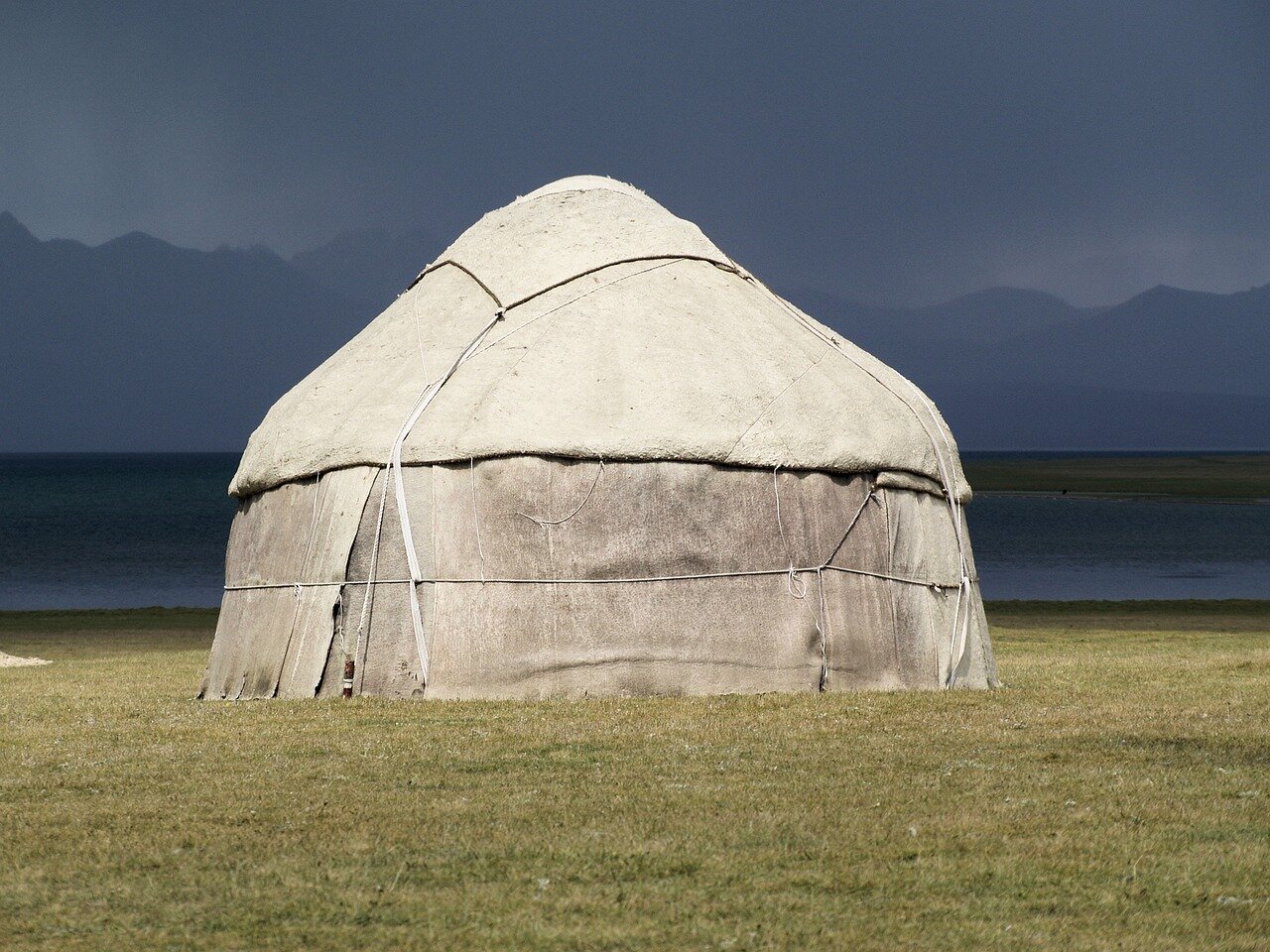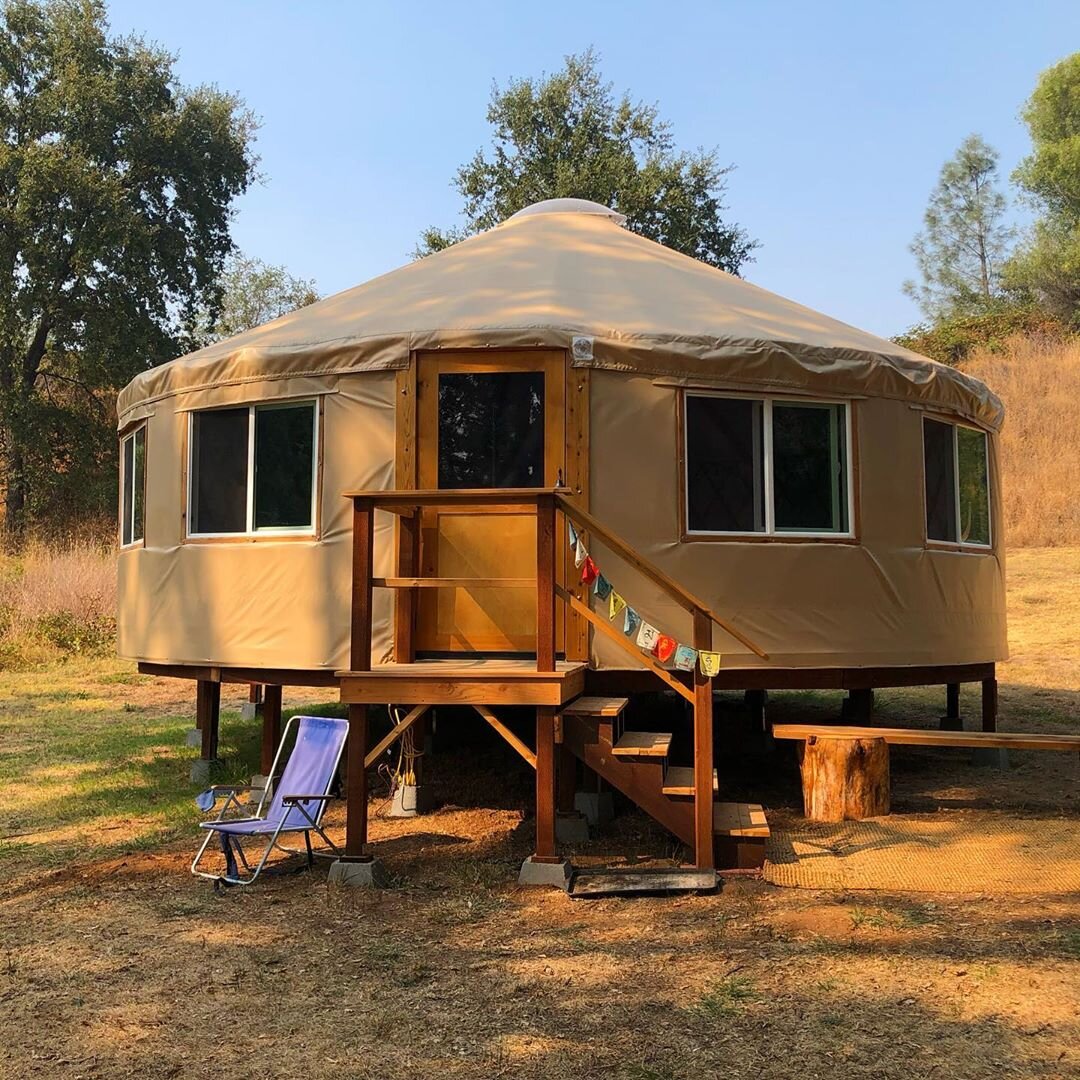Yurts So Good
Hey friends. We’ve been struggling a little lately… between the pandemic, the election, and wildfire smoke making the air toxic in both LA and Mariposa, things have been feeling pretty bleak. It’s not easy trying to live our daily lives and create our homestead with all of that happening in the background, but like everyone else, we muddle through.
So today we’re talking about something that makes us happy: yurts! We’ve wanted to put a yurt on our property for a while now, and although we’re still in the Research And Planning phase, I wanted to take this opportunity to give everyone a little more info. Yurts are increasingly popular these days, but Karen on AirBnB did not invent yurts. So… who did? And how do they work?
Let’s start at the beginning. Yurts are old. Like, thousands of years old. Also called gers, they’re the traditional dwelling for nomadic groups in Mongolia and Central Asia. “Yurt” is actually the Turkish word for home while “ger” is the Mongolian word for home… the yurt is so fundamental to these cultures that it literally means home. These days, there’s a huge yurt district in the Mongolian capital of Ulaanbaatar; many Mongolians have been forced to move to the city because their traditional nomadic herding is no longer feasible (thanks, capitalism and climate change!), but the yurt is so important to their culture that they took it with them.
One of the most important features of a yurt is that it’s portable. Which is, you know, pretty important for nomads. They’re perfect for the climate in the steppe of Central Asia, which has strong winds and extreme temperatures, because a round shape is safer in the wind and more efficient to heat/cool.
But yurts/gers aren’t the only traditional round house or round tent out there. Here in America, you’re probably familiar with the tipi, another super-portable round tent ideal for nomads in the open plains.
And in the Yosemite area of California, where our property is, the Ahwaneechee people lived in round houses called muucha or umacha, which are like bark-covered tipis. They also had bigger round houses for group gatherings that they half-dug into the earth. So it feels very right that the 2 types of structures we want to build on our property are dug-outs and yurts!
Our ethos with this property has always been to build in harmony with nature. Like green grass lawns, square houses just don’t make a lot of sense. The grid is for cubes! As a bonus, round spaces are more efficient to build, have better acoustics, and just generally feel more grounded and organic.
Yurts first came to America when a hippie math professor read a National Geographic magazine article about Mongolia in the 1960s. Check out Bill Coperthwaite’s book A Handmade Life if you’re interested. Then in 1978, the company Pacific Yurts started manufacturing yurts on a large scale. Now there are dozens of companies out there that make and sell yurt kits. Modern yurts use more updated materials than traditional yurts, but the design is basically the same as it was a thousand years ago.
At first we wanted to design and build our own yurt from scratch, but we realized it would be such an enormous task that it would completely dominate our property efforts for years. So we decided to go with a small company a few hours from our property, Living Intent. We’re looking at a 16-foot yurt, which will run us about $7000… that isn’t a lot of money compared to a house, but it’s still a big sum. Our goal is to have a yurt on our property by April 2021, so we’re currently saving money and over the winter we’ll start building the wooden yurt platform.
So lots of digging and carpentry and money-saving is in our near future! I’m excited to keep taking steps towards making this yurt dream a reality and I’m grateful to the cultures that have developed this incredible living space that is so perfect for our property. We have a lot to learn about robust sustainable living from those who have come before us.



